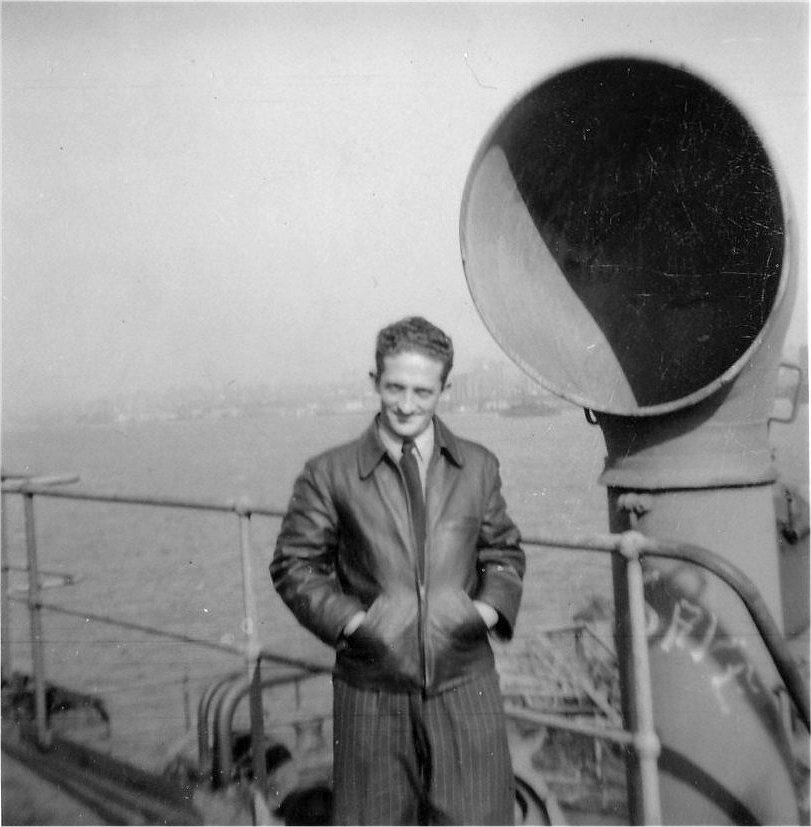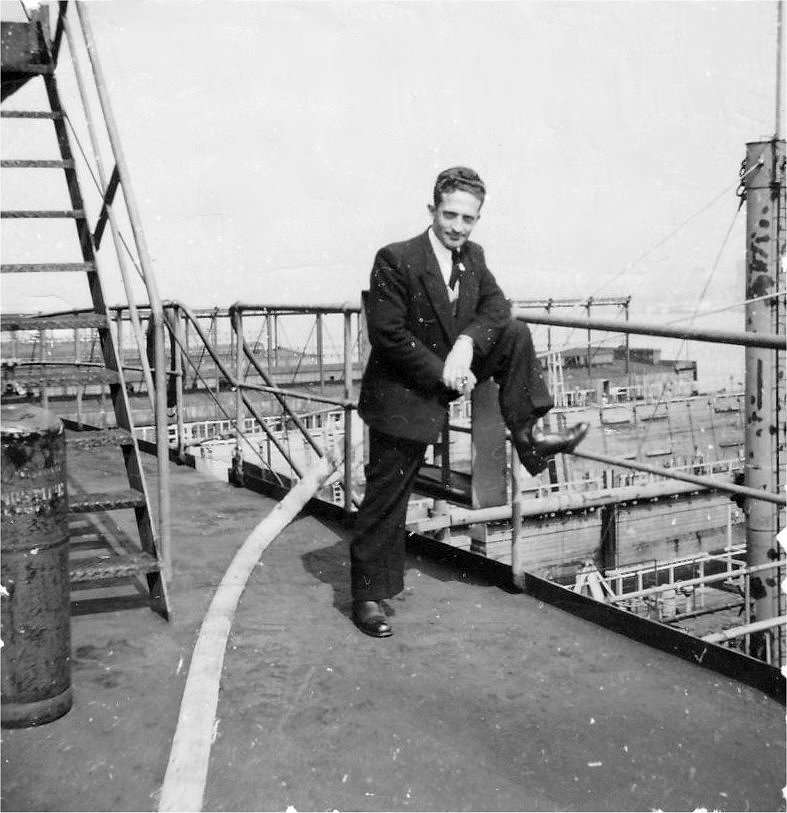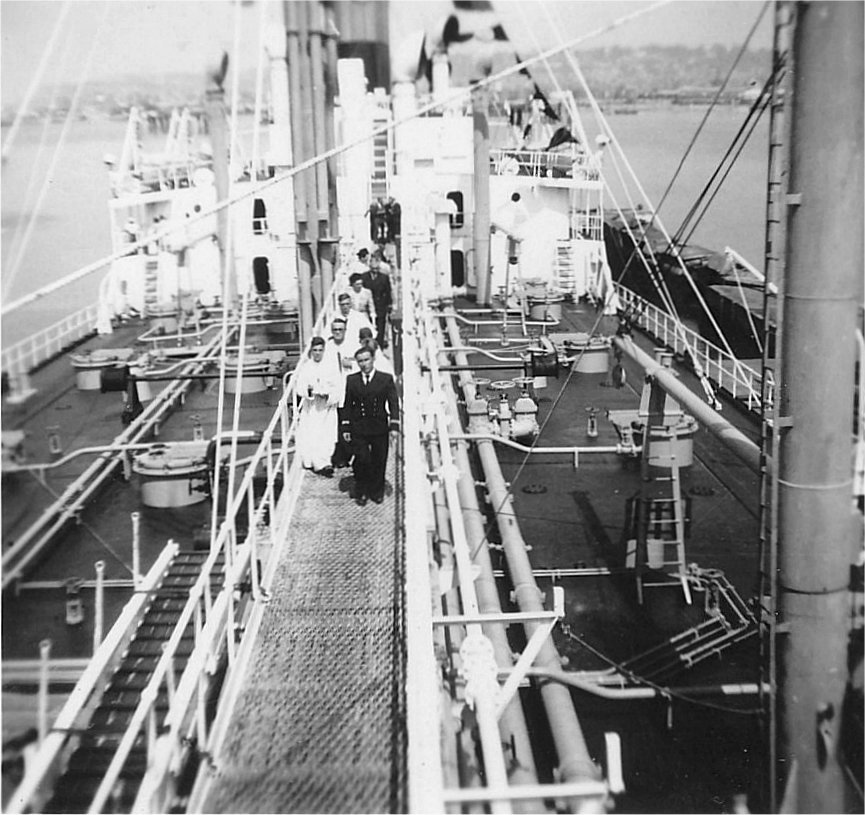Auke Visser's Famous T - Tankers Pages | home
Jean Furic (1920 - 2001), a French Merchant Engineer
Bernard Furic, wrote to me:
Dear Mr VISSER,
I just happened to discover your Famous T-Tankers Pages and searched for the T2 tanker my father sailed on, originally named DOBYTOWN.
It has been a surprise for me to read that the ship was built in Mobile, Alabama, since I have always understood from my father Jean FURIC (1920 - 2001) that it was built by Bethlehem Steel in Hoboken, N.J.
At the age of 19, my father signed in in the French Navy in November 1939.
He was appointed as a technical draftsman on board "Jean Bart", the battle ship under building in St Nazaire shipyard. In July 1940, "Jean Bart" sailed out on its own power to Casblanca, Morroco, although it was far from being completed : only three boilers and one out of 4 machines were available and only a few anti-aircraft guns installed. When they sailed out from the building drydock, German troops were in Savenay, a mere 30 miles from St Nazaire.
While still in the Navy, my father prepared for the Merchant Navy 2nd Class Engineer ticket, which he got right before being demobilized at the end of 1942.
He then came back from Morroco to stay with his mother in Brittany. He sailed as a mechanic on small fishing boats in order not to be sent to Germany under the STO (Service du Travail Obligatoire = Compulsory Work Scheme under the German occupation), until he was hired as Deputy Manager of a Fishermen's school near Lorient (1943-1946).
In July 1946 he went back at sea as a 4th engineer on board a tanker. At then end of his first two periods at sea, he was selected by his company to be one of the first seven people sent to Hoboken, N.J., to supervise the completion of DOBYTOWN, renamed LA MÈDE by the French Government. The ship was to be further renamed CÉLIMÈNE by the shipping company.
 My father on board LA MÈDE in Hoboken.
According to my father's Sailor's ID Book he was signed on the vessel's register on 12 June 1947 in New York.
At some stage of the works, the shipyard workers went on strike (June-November 1947?). I understood that at some stage, this group of Frenchmen who were accommodated in a hotel decided to complete themselves some work on board the ship so that they could live together there.
 My father on board LA MÈDE in Hoboken.
It was not until 25 March 1948 that my father disembarked in Le Havre. Incidentally, being born on 11 October 1947, I was more than 5 months old when he came back home.
 Christening ceremony of CÉLIMÈNE in LE HAVRE in March 1948.
My father sailed as a derogatory 3rd engineer (your 2nd engineer) on board CÉLIMÈNE (May-Sept. 1948).
He then attended the Merchant Navy Academy in Nantes and got his Officier Mécanicien de 1ere Classe ticket (both steam and motor engines certificates) in 1949.
Late November 1949 he embarked on board CÉLIMÈNE as 2nd Mécanicien (1st Engineer). After another 2 sailing periods as 1st Engineer, he was appointed Chief Engineer on board CÉLIMÈNE on 12 November 1950.
He sailed as a Chief Engineer on board tankers until he retired in 1975.
As Head of Mechanic Dept. at ATELIERS FRANCAIS DE L'OUEST in Brest, a major French shiprepair yard, in the early 70's I had 2 times the opportunity to repair S/S GILDA, a 125000 TDW tanker where my father was Chief Engineer !
I retired in 2006 as General Manager of SOBRENA (the same shiprepair yard) in Brest, a shipyard that could (and did) accommodate up to 550000 TDW tankers.
|